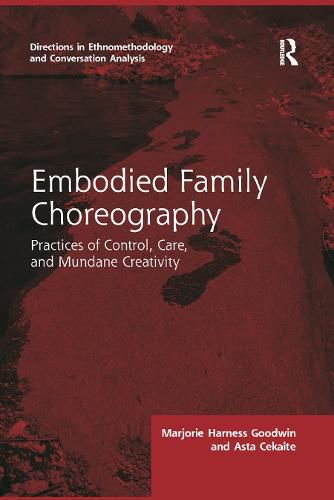Readings Newsletter
Become a Readings Member to make your shopping experience even easier.
Sign in or sign up for free!
You’re not far away from qualifying for FREE standard shipping within Australia
You’ve qualified for FREE standard shipping within Australia
The cart is loading…






Embodied Family Choreography documents the lived and embodied practices employed to establish, maintain, and negotiate intimate social relationships in the family, examining forms of control, care, and creativity. Making use of the extensive video archives of family interaction in the US and Sweden, it presents the first investigation of how touch and interaction between bodies, in conjunction with talk, constitute a primary means of orchestrating activities through directives, thus creating rich relationships through supportive interchanges, and engaging in playful explorations of the world. Through close investigation of the sequential and simultaneous engagement of bodies interacting with other bodies, this book makes visible the important role touch plays in the context of contemporary Western middle class family life and is pioneering in its analysis of how the visual, aural, and haptic senses (usually analysed separately) mutually elaborate one another. As such, Embodied Family Choreography will appeal to scholars of child development, the sociology of the family and ethnomethodology and conversation analysis.
$9.00 standard shipping within Australia
FREE standard shipping within Australia for orders over $100.00
Express & International shipping calculated at checkout
Embodied Family Choreography documents the lived and embodied practices employed to establish, maintain, and negotiate intimate social relationships in the family, examining forms of control, care, and creativity. Making use of the extensive video archives of family interaction in the US and Sweden, it presents the first investigation of how touch and interaction between bodies, in conjunction with talk, constitute a primary means of orchestrating activities through directives, thus creating rich relationships through supportive interchanges, and engaging in playful explorations of the world. Through close investigation of the sequential and simultaneous engagement of bodies interacting with other bodies, this book makes visible the important role touch plays in the context of contemporary Western middle class family life and is pioneering in its analysis of how the visual, aural, and haptic senses (usually analysed separately) mutually elaborate one another. As such, Embodied Family Choreography will appeal to scholars of child development, the sociology of the family and ethnomethodology and conversation analysis.